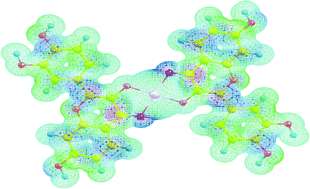Comparative spectroscopic and mechanistic study of chelation properties of fisetin with iron in aqueous buffered solutions. Implications on in vitroantioxidant activity†
Abstract

* Corresponding authors
a
Faculty of Physical Chemistry University of Belgrade, Studentski trg 12-16, Belgrade, Republic of Serbia
E-mail:
markovich@ffh.bg.ac.rs
b Department of Bio-chemical and Medical Sciences, State University of Novi Pazar, Vuka Karadžića bb, Novi Pazar, Republic of Serbia
c Kirilo Savić Institute, Vojvode Stepe 51, Belgrade, Republic of Serbia
d Harvard School of Public Health, Harvard University, Boston, MA, USA
e Bioengineering Research and Development Center, Kragujevac, Republic of Serbia

 Please wait while we load your content...
Something went wrong. Try again?
Please wait while we load your content...
Something went wrong. Try again?
J. M. Dimitrić Marković, Z. S. Marković, T. P. Brdarić and N. D. Filipović, Dalton Trans., 2011, 40, 4560 DOI: 10.1039/C0DT01834A
To request permission to reproduce material from this article, please go to the Copyright Clearance Center request page.
If you are an author contributing to an RSC publication, you do not need to request permission provided correct acknowledgement is given.
If you are the author of this article, you do not need to request permission to reproduce figures and diagrams provided correct acknowledgement is given. If you want to reproduce the whole article in a third-party publication (excluding your thesis/dissertation for which permission is not required) please go to the Copyright Clearance Center request page.
Read more about how to correctly acknowledge RSC content.
 Fetching data from CrossRef.
Fetching data from CrossRef.
This may take some time to load.
Loading related content
